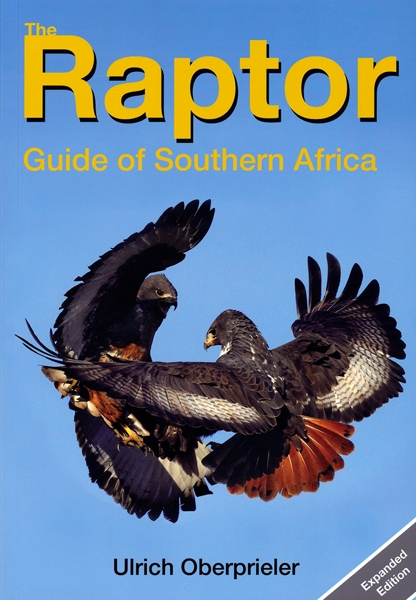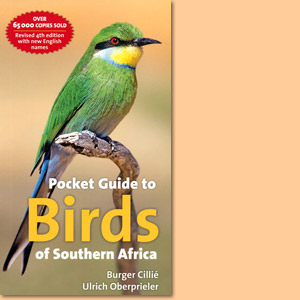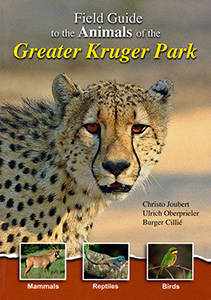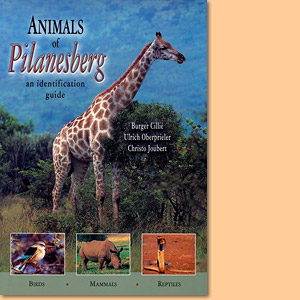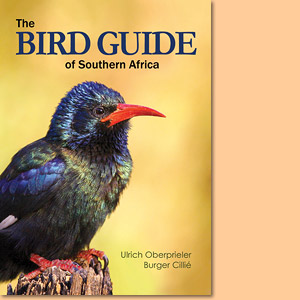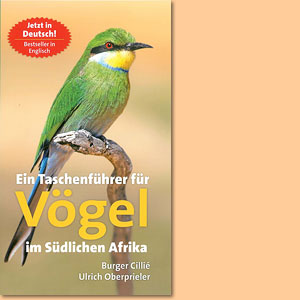The Raptor Guide of Southern Africa, by Ulrich Oberprieler
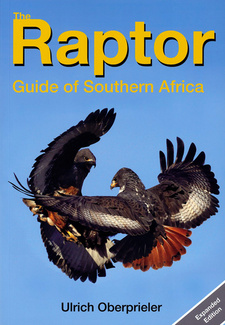
The Raptor Guide of Southern Africa, by Ulrich Oberprieler. ISBN 9780992170103 / ISBN 978-0-9921701-0-3
From the Raptor Guide of Southern Africa, by Ulrich Oberprieler and Burger Cillie, this is the introduction and an example which style of description is to expect.
Raptors are the most magnificent of birds. Who is not impressed by the power and strength of an eagle, the agility and aggression of a sparrowhawk, the spectacular speed of a falcon stooping at its prey, or the silent flight of an owl? As top predators, raptors not only play a special role in nature but are also immensely popular among birdwatchers. Raptors are not easy to identify. In spite of a number of excellent field guides to the birds of Southern Africa, most birdwatchers experience difficulties with this group. The Raptor Guide of Southern Africa is a user-friendly identification guide to the diurnal birds of prey and the owls of Southern Africa. Its easy layout, clear photographs, helpful illustrations, readable text and cross-references enable birdwatchers to identify raptors with confidence. The Raptor Guide is divided into five sections. Section 1 introduces you to the general biology of Southern African raptors. This information will give you a better understanding of the various adaptations and life styles of raptors. Section 2 emphasises the different groups of raptors, as it is of prime importance to first place a raptor within a certain group before attempting to identify the species. Section 3 deals with the species of Southern African raptors. The text is divided into a number of topics and is cross-referenced to Sections 2 and 4. As most birdwatchers are in possession of one or more of the well-illustrated field guides to the birds of Southern Africa, the authors decided to show the various species by means of photographs. In a few cases photos of captive birds have been used as clear identification photographs of wild birds could not be obtained. As diurnal raptors are often seen in flight, illustrations of the flight patterns are included. The sonograms are an important aid to identify owls by their calls. The simplified drawings in Section 4 enable you to compare similar species and confirm the identification of a specific raptor. The book ends with Section 5, the references. This section includes a number of helpful pages: photo's of raptors in flight, 12 colour plates of the flight patterns, an overview of the raptor groups and a quick index to the species. Birdwatchers will find this book an indispensable guide to the raptors of Southern Africa.
Example: Description of the White-headed Vulture
White-headed VultureAegypius occipitalis
Field recognition: Very large. May be confused with the other two dark vultures, namely the Hooded and Lappet-faced Vultures but is intermediate in size. The head is triangular in shape. Conspicuous white down covers the back of the head, while the bare face and throat are pink, blushing red in excitement. The cere is blue, the bill red to orange. The legs are pinkish to red. The plumage is mainly black with a white belly, leggings and crop patch. These colours may be seen in flight, including the off-white or grey secondaries of the male, or the white secondaries of the female. Juv. The juvenile lacks the white plumage. The head is covered with brown down, but the pink face, blue cere and red bill remain diagnostic. The legs are brownish-pink. It may be confused with juvenile Hooded and Lappet-faced Vultures, but the shape and colour of the head and bill prevent confusion. In flight the narrow whitish line running along the base of the flight feathers is also a useful identification pointer. It takes about six years to moult into full adult plumage.
Behaviour: Pairs are territorial, occupying areas of 50-430 km2 and thus no more than two adult birds are ever seen at a carcass. Roosts on trees, usually at or near the nest site. Starts flying early in the morning and thus has a better opportunity to spot carcasses. Never very numerous, but prefers areas with Baobab or large acacia trees as these make excellent nest sites. Usually silent.
Feeding methods: Often arrives first at a carcass, but cannot compete with larger vultures when they arrive. Dropped scraps, tougher material, such as sinews and skin, as well as insects are therefore an important part of its diet. It also feeds on the dead bodies of smaller animals, such as hares, antelope lambs, guineafowl and mongooses, and is suspected of killing some of them itself. It may kill flamingo chicks and capture barbel in a drying pool. More important, however, is that it often pirates food from other raptors.
Breeding:Season: May to August, peaking in June. Nest: A large platform of sticks, lined with grass and hair. Built on top of preferably flat-topped trees. Breeds singly. The nests are widely spaced, as pairs are territorial. Clutch: 1 egg. Incubation: 55-56 days by both sexes. Nestling: ±100 days, fed by both parents. Fledgling dependent on parents for another few months.
Origin of name: In the pseudomythological stories of Antoninus Liberalis, both Neophron (see the Egyptian Vulture) and Aegypius were changed into vultures by Zeus. The Latin occipitalis is a reference to the back of the head.
Measurements:
Length: 78-85 cm Wingspan: 202-230 cm Weight: 3,30-5,30 (4,26) kg Females are larger than males.
Distribution: Africa south of the Sahara.
Habitat: Prefers broadleaved woodland, but also savanna, lightly wooded grassland and semi-desert.
Food: Carrion; often scraps or small animals. Also insects. Regularly pirates food.
Status: Uncommon resident. Rare outside major conservation areas. Numbers have declined in recent years.
Names: Afrikaans: Witkopaasvoël / French: Vautour à tête blanche / German: Wollkopfgeier / Portuguese: Abutre-de-cabeça-branca.
This is an extract from the book: The Raptor Guide of Southern Africa, by Ulrich Oberprieler and Burger Cillie
Authors: Ulrich Oberprieler; Burger Cillie
Publisher: Sunbird Publishers
Cape Town, South Africa 2009
ISBN 9780620432238
Softcover, 17x24 cm, 304 pages, 604 photographs
Oberprieler, Ulrich im Namibiana-Buchangebot
The Raptor Guide of Southern Africa
The Raptor Guide of Southern Africa describes both diurnal and nocturnal species.
Pocket Guide to Birds of Southern Africa
This pocket bird guide is an essential and practical aid for birders in the bush of Southern Africa.
Field Guide to the Animals of the Greater Kruger Park
The Field Guide to the Animals of the Greater Kruger Park introduces the richness of animal life to the visitors of the famous National Park.
Animals of the Pilanesberg: An Identification Guide
The aim of this identification guide is introduce this rich diversity of the animals of the Pilanesberg.
The Bird Guide of Southern Africa
The Bird Guide of Southern Africa features all southern African birds, except pelagics and vagrants in over 1200 excellent colour photographs.
Ein Taschenführer für Vögel im südlichen Afrika
Dieser praktische Führer für die Vögel im südlichen Afrika hat Westentaschenformat.

